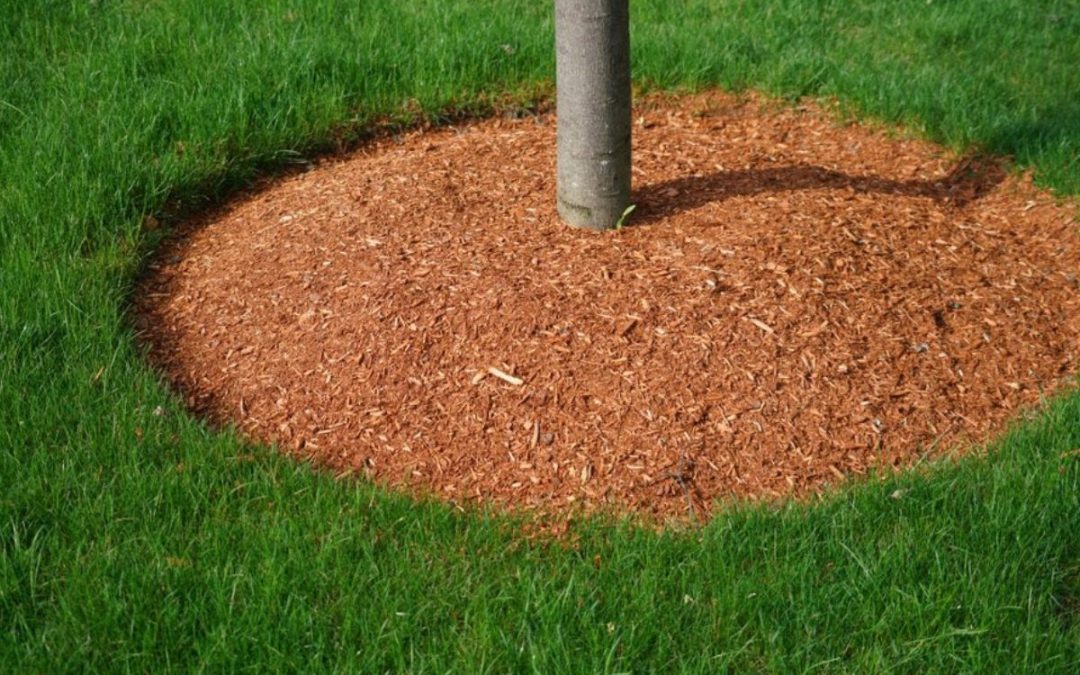Mulching properly can help you save water and protect your trees this summer.
Learn why mulching is essential for tree health and how to do it properly.
California residents are doing everything they can to conserve water due to the warmer weather and lack of rain. Though they may not require daily attention, routine care is critical to ensuring the health, beauty, and safety of your property’s trees, especially during droughts.
So, how do you keep your trees healthy and irrigated while also conserving water?
Mulch is one of the best ways to support the health of your mature trees and saplings while conserving water. Mulching is simple, and this protective ground covering not only saves water but also controls weeds and enriches your soil. Mulch is a miracle!
You’ll learn how to mulch trees, how much mulch to use, and which type is best for your needs by following the steps outlined below.
5 Ways Proper Mulching Benefits Trees
First, consider the big picture as well as the specific benefits mulch provides for your trees. Knowing how mulch works can help you focus your efforts and get the most out of it.
1) Preserve soil moisture
Mulching your trees forms an insulating blanket over the soil, reducing evaporation and retaining moisture for the tree’s roots. This is especially important if you’re watching your water usage during a drought.
Mulch also inhibits the growth of weeds and grasses, preventing tree roots from competing for water with invasive plants. When it rains, the mulch will help to prevent water loss through run-off and erosion.
2) Normal soil temperature
You can also moderate soil temperature fluctuations with the right amount of mulch. Mulches protect the ground from the sun and heat during hot weather, keeping the soil cool. This prevents the top soil around the tree roots from drying out and hardening.
Mulches help the soil retain warmth during cold weather, lowering the risk of frost damage or root injury.
3) Enhance soil health
Organic mulch provides structure, nutrients, and aeration to the soil as it decomposes. More on organic vs inorganic is covered in the following section.
4) Provide Security
When mulch is applied properly, it protects the roots, keeps the trunk dry, and prevents soil compaction caused by foot traffic and lawn mowers.
5) Prevent weed and grass growth
Mulching, as previously stated, discourages the growth of weeds and grass. Weeds and grasses that grow at the base of a tree steal not only the moisture from the soil, but also the nutrients that the tree requires.
Organic vs. Inorganic Mulching for Trees
You generally have two options when it comes to selecting the best type of mulch for your landscape: organic and inorganic. Both types have distinct advantages and disadvantages.
Mulch that is organic
Organic mulch is the way to go if you don’t mind a little more routine care and want to improve the health of your topsoil.
Organic mulch comes in several varieties, including:
- Chips of wood
- Straw
- Pine cones
- Hardwood or softwood shredded
- Leaves of Bark
As previously stated, organic mulches improve soil structure and fertility as they decompose. However, because organic mulch degrades over time, it may necessitate more maintenance and reapplication.
Mulch (Inorganic)
Inorganic mulch may be a better option if you want something more visually appealing and low-maintenance.
Inorganic mulch comes in several varieties, including:
- Pebbles or stones
- Rubber
- Tarp
- Gravel
While inorganic mulches do not provide the same soil-enriching benefits as organic mulches, they do provide longer-lasting weed prevention with less upkeep.
Inorganic mulches can also be more aesthetically pleasing. River rocks or other multicolored stones make excellent mulch and can be a stunning addition to your landscape.
Mulch all the way to the drip line
When applying mulch, it’s critical to understand the scope of the area you’re covering and how close you should get to the trunk. Mulch should be applied away from the trunk, starting at the “root flare.” This is the area at the base of the tree where the roots flare out above ground.
As the tree grows, the circumference of the mulch area should expand. The mulch should ideally extend all the way to the tree’s canopy, also known as the “drip line.”
Avoid excessive mulching.
Over-mulching is the most common mulching mistake. It is not advisable to pile mulch over the root flare and up the trunk. Furthermore, the mulch depth should be between two and four inches, or less if the soil is poorly drained.
Finer or denser mulch, such as pebbles, should typically be piled one to two inches deep to ensure adequate oxygen and water reach the root system.
Vintage Tree Care’s arborists are here to assist you.
You now understand how mulching can benefit the health of your trees while also saving water. We’ve also talked about the proper method, materials, and frequency. It’s now time to start mulching those trees.
A certified arborist can assist you if you have a tree that has already been over-mulched or if you are concerned about the general health of your newly planted or mature trees. If your trees are showing signs of stress, call us at (707) 495-4686 or contact us online to schedule an arborist inspection.


